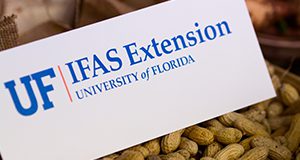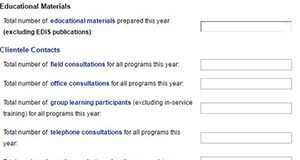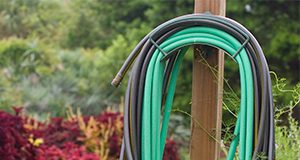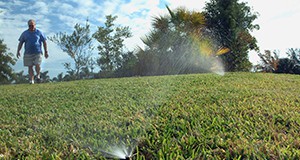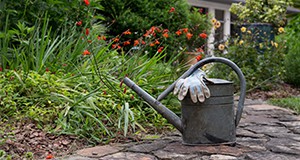This eight-page fact sheet contains forms for horticulture Extension agents and staff to use during walk-in consultations and/or on-site consultations related to plant identification, problem diagnosis, and cultural advice. The forms are available as fillable PDFs. Written by Amanda D. Ali, Laura A. Warner, Sydney Park Brown, Susan Haddock, and Laurie Albrecht and published by the Department of Agricultural Education and Communication.
http://edis.ifas.ufl.edu/wc277
Category: Program Development
Effective Practice for Building Cross Sector Partnerships
This four-page article outlines a practical framework built upon best practices that can be used by those considering the development of cross sector partnerships to address environmental and social issues.Written by John M. Diaz and published by the Department of Agricultural Education and Communication.
http://edis.ifas.ufl.edu/wc271
Estimating Return on Investment (ROI) for a Behavior Change: An Evaluation Tool for Extension Programs
Extension professionals can benefit from knowing the value of a program’s outcomes compared to how much it costs. One way to estimate a program’s value relative to cost is through a series of calculations, known as Return on Investment (ROI). This four-page fact sheet describes ROI and how Extension professionals can use it in their programming. Written by Amanda D. Ali, Laura A. Warner, and Hayk Khachatryan and published by the Department of Agricultural Education and Communication.
http://edis.ifas.ufl.edu/wc270
Using Personality Type Preferences to Enhance Team Work in Extension Programs
This three-page fact sheet, the fifth in a series on teaching different personality types, covers the practical ways in which Extension professionals can use the influence of personality type preferences to enhance team dynamics in Extension program development and implementation. This article will cover the Myers-Briggs personality type indicator, True Colors personality type indicator, and the Kirton Adaption Innovation Inventory. Written by J. Brianne Bird, Alexa J. Lamm, and Hannah Carter and published by the Department of Agricultural Education and Communication.
http://edis.ifas.ufl.edu/wc269
Matrix Ranking: A Tool for Decision-Making and Prioritization
Matrix ranking is an activity used to analyze and prioritize information. Extension professionals often work with community groups who may benefit from this type of analysis. This four-page fact sheet explains how Extension professionals can use matrix ranking to facilitate prioritization and decision-making. Written by Keegan Gay, Eric Stubbs, and Sebastian Galindo-Gonzalez and published by the Department of Agricultural Education and Communication.
http://edis.ifas.ufl.edu/wc239
Reporting Clientele Contacts in Workload
Each fall UF/IFAS faculty are asked to report on their Extension activities and accomplishments over the past year, including the contact made with Extension clientele through both direct and indirect methods. This five-page fact sheet describes how to report these interactions in Workload. Written by Diane Craig and Glenn D. Israel and published by the Department of Agricultural Education and Communication.
http://edis.ifas.ufl.edu/wc058
Engaging High Water Users in Water Conservation #3: High Water Users' Opportunities to Learn about Water Conservation
Homeowners who use excessive amounts of water to irrigate their landscapes have specified demographic characteristics and have been identified as high water users. This three-page fact sheet is the third in a series discussing how Extension can improve high water users' engagement in water conservation, focusing on how to effectively communicate with high water users about water conservation education. Written by Pei-wen Huang and Alexa J. Lamm and published by the Department of Agricultural Education and Communication.
http://edis.ifas.ufl.edu/wc257
Guidelines for Operation and Usage of County Kitchens in the State of Florida
 In recent years, many people have become interested in developing small food businesses. Using county kitchens to make food products for sale may seem very attractive. However, because of different local, state, and federal regulation requirements, there may be some confusion and unresolved conflicts among different parties as to the legalities and practicalities involved. This 3-page fact sheet provides guidelines and advice for Florida Extension personnel to use when determining the appropriate usage for their kitchen facilities, based on a situation in one Florida county. The publication covers utilization, roles and responsibilities, and potential liability issues relevant to the use of county kitchens, providing some potential solutions to conflicts for all parties. Written by Amarat Simonne, Tim Wilson, Geralyn Sachs, Joanne Cooper, Brenda Morris, Steven von Bodungen, and Liz Felter, and published by the UF Department of Family, Youth and Community Sciences, August 2016.
In recent years, many people have become interested in developing small food businesses. Using county kitchens to make food products for sale may seem very attractive. However, because of different local, state, and federal regulation requirements, there may be some confusion and unresolved conflicts among different parties as to the legalities and practicalities involved. This 3-page fact sheet provides guidelines and advice for Florida Extension personnel to use when determining the appropriate usage for their kitchen facilities, based on a situation in one Florida county. The publication covers utilization, roles and responsibilities, and potential liability issues relevant to the use of county kitchens, providing some potential solutions to conflicts for all parties. Written by Amarat Simonne, Tim Wilson, Geralyn Sachs, Joanne Cooper, Brenda Morris, Steven von Bodungen, and Liz Felter, and published by the UF Department of Family, Youth and Community Sciences, August 2016.
http://edis.ifas.ufl.edu/fy1469
Opinion Leadership and Local Food
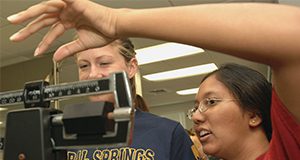
Three new articles have been published as part of a new series on Opinion Leadership and Local Food. These articles look at the role opinion leaders, or individuals who have a large amount of influence within their respective social circles, can have on motivating their peers to join in purchasing local food. The articles are as follows:
1. Opinion Leadership and the Perceived Health Benefits of Local Food (http://edis.ifas.ufl.edu/wc266)
2. Opinion Leadership and the Perceived Effects of Local Food on the Local Community (http://edis.ifas.ufl.edu/wc267)
3. Opinion Leadership and the Perceived Economic Benefits of Local Food (http://edis.ifas.ufl.edu/wc268)
Written by Layne S. Marshall, Melissa R. Taylor, and Alexa J. Lamm and published by the Department of Agricultural Education and Communication.
Teaching Students with Disabilities
Seven new articles have been published in the Teaching Students with Disabilities series. This series provides useful information to ag-ed based instructors about different disabilities and how to teach those students in the unique environments posed by ag-ed, including classroom, laboratory, and non-formal environments. The new articles are as follows:
- WC258 Hearing Impairments and Deafness (http://edis.ifas.ufl.edu/wc258)
- WC259 Visual Impairment and Blindness (http://edis.ifas.ufl.edu/wc259)
- WC260 Emotional Disturbance and Behavioral Disorder (http://edis.ifas.ufl.edu/wc260)
- WC261 Intellectual Disabilities (http://edis.ifas.ufl.edu/wc261)
- WC262 Orthopedic Impairment (http://edis.ifas.ufl.edu/wc262)
- WC263 Speech and Language Impairments (http://edis.ifas.ufl.edu/wc263)
- WC264 Traumatic Brain Injury (http://edis.ifas.ufl.edu/wc264)
Written by Blake C. Colclasure, Andrew C. Thoron, and Sarah E. LaRose and published by the Department of Agricultural Education and Communication.
http://edis.ifas.ufl.edu/topic_series_teaching_students_with_disabilities
Engaging High Water Users in Water Conservation #2: High Water Users' Water-related Behaviors and Willingness to Act
Approximately 50% of Floridians’ daily water consumption is used for outdoor purposes, such as landscape irrigation; this is 20% higher than the national average. In order to alleviate the pressure on the precious water resources in Florida from various demands, increased public awareness and engagement in water conservation is needed especially among high water users. This four-page fact sheet is the second in a series discussing how Extension can improve high water users’ engagement in water conservation with a focus on high water users’ water-related behavior and willingness to act. Written by Pei-wen Huang and Alexa J. Lamm and published by the Department of Agricultural Education and Communication.
http://edis.ifas.ufl.edu/wc256
Engaging High Water Users in Water Conservation #1: High Water Users' Experiences and Perceptions of Water
Florida has an abundance of water, but still faces an increased pressure on water resources because of a growing population, prosperous tourism, and an active agricultural industry. This five-page fact sheet is the first in a series discussing how Extension can improve high water users' engagement in water conservation by focusing on high water users' characteristics, experiences with water issues, and perceptions of water. Written by Pei-wen Huang and Alexa J. Lamm and published by the Department of Agricultural Education and Communication.
http://edis.ifas.ufl.edu/wc255
Identifying the Attitudes and Preferences of Parents and Children for Seafood: Summary of Focus Group Results
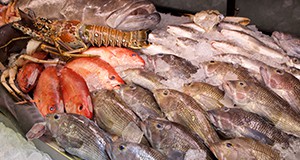
Seafood contains high-quality protein, vitamins, and minerals that have many health benefits, but the average family’s consumption of seafood in the United States remains below recommended levels. To begin to understand how to raise consumption levels, the study described in this three-page fact sheet focused on the influence parents’ seafood consumption habits may have on their children. Written by Anh Sam, Xiang Bi, and Lisa House and published by the Department of Food and Resource Economics.
http://edis.ifas.ufl.edu/fe992
Encouraging Landscape Water-Conservation Behaviors #4: Florida Homeowners' Reactions to Messages that Encourage Landscape Water Conservation Practice Adoption
This is the fourth publication in a series focused on improving and encouraging water conservation among Florida residents who use irrigation in their home landscape. This four-page fact sheet examines the impact of differently framed messages on Florida residents’ attitudes toward good irrigation practices and their perceived ability to implement those practices. Written by Joy Rumble, Laura A. Warner, Courtney Owens, Alexa Lamm, and Randall Cantrell and published by the Department of Agricultural Education and Communication.
http://edis.ifas.ufl.edu/wc202
Differences in Perceptions of Agricultural Water Use between the General Public and Local Officials
Due to the scarcity of water resources among states and the influx of people, balancing agriculture and public water needs has become a contentious issue. Therefore, dialogue msut take place to educate and inform the general public and local officials about the reality of agricultural water use. This is the second article in a series describing the differences in perceptions of agricultural water use in Florida between the general public and local officials. This four-page fact sheet identifies the differens among groups for agricultural water use and provides ways to change Extension programming according to these differences. Written by Courtney T. Owens, Alexa J. Lamm, and Ricky W. Telg and published by the Department of Agricultural Education and Communication.
http://edis.ifas.ufl.edu/wc249
Promoting Ag Awareness through Commodity Fact Sheets
Increasing public awareness of Florida agriculture is a vital step in motivating the public to support agriculture. A basic understanding of Florida’s agricultural products, their impacts on the economy and the environment, and their availability contributes to Extension’s mission to sustain and enhance quality of life. This three-page publication outlines a series of fact sheets with infographics related to specific Florida agricultural commodities. These fact sheets are intended to be visually appealing while presenting an overview of the commodity and its role in Florida agriculture. Written by Kathryn A. Stofer, Jessica Sullivan, Joy Rumble, and Libbie Johnson and published by the Department of Agricultural Education and Communication.
http://edis.ifas.ufl.edu/wc253
Understanding Science: How to Fill the Communication Gap
The industrialization of society has led to many scientific advancements, which have both benefits and controversies. Despite sound science, controversies around scientific issues have led the public to make decisions that disagree with scientific evidence. Why does this gap between science and perception exist? This four-page fact sheet looks at the characteristics of scientists, the media, and the public to help explain how the gap in science communication has occurred while also providing strategies for closing that gap in the future. Written by Joy N. Rumble and published by the Department of Agricultural Education and Communication.
http://edis.ifas.ufl.edu/wc254
Identifying Gaps between Importance and Satisfaction to Identify Extension Clients' Needs
The third document in a series of three about using Importance-performance analyiss to prioritize Extension resources, this three-page article covers gap analysis as a means to understand a client's perceptions and rank Extension priorities. Gap analysis using IPA is an innovative and useful approach for Extension educators to conduct needs assessments and to evaluate programs. Written by Anil Kumar Chaudhary and Laura A. Warner and published by the Department of Agricultural Education and Communication.
http://edis.ifas.ufl.edu/wc252
Visually Plotting Importance and Satisfaction to Identify Extension Clients' Needs
The second document in a series of three about using importance-performance analysis to prioritize Extension resources, this four-page article covers how to collect data and use them to generate visual plots. IPA data plots are attractive and easy-to-understand visual maps that display importance and satisfaction scores for certain attributes. Written by Anil Kumar Chaudhary and Laura A. Warner and published by the Department of Agricultural Education and Communication.
http://edis.ifas.ufl.edu/wc251
Prioritizing Extension Resources Using Perceived Importance and Satisfaction: An Underutilized Approach
This is the first article in a series of three on using Importance-performance analysis to prioritize Extension resources. Importance-performance analysis, or IPA, measure how people feel about certain chracteristics of a place, issue, or program. Extension professionals can use IPA to make decisions and prioritize resources by understanding how clients rate the importance of and satisfaction with specific attributes of a program or facility. This three-page fact sheet explains IPA and how to use it. Written by Laura A. Warner and Anil Jumar Chaudhary and published by the Department of Agricultural Education and Communication.
http://edis.ifas.ufl.edu/wc250
